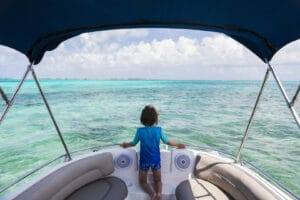In the vibrant underwater world of the Turks and Caicos Islands, where coral reefs bloom and seagrass meadows sway with the tides, one of the ocean’s most enchanting creatures quietly thrives—the seahorse. With their horse-like heads, curling tails, and graceful movements, seahorses captivate divers and marine enthusiasts alike. But beyond their whimsical appearance lies a story of ecological importance, evolutionary marvels, and delicate survival.
What Are Seahorses?
Seahorses belong to the genus Hippocampus, which includes around 50 known species. Despite their name and equine resemblance, seahorses are actually fish. They possess gills, swim bladders, and fins, although their swimming style is far from typical. Using a tiny dorsal fin on their back, they flutter through the water at a snail’s pace, making them one of the slowest-moving fish in the ocean.
Their bodies are covered in bony plates instead of scales, giving them a rigid, armor-like appearance. Seahorses range in size from less than an inch to over a foot long, depending on the species. Their coloration can vary widely—some are pale and speckled, while others display vibrant hues of orange, red, or yellow, often with the ability to change color for camouflage or mating displays.
What Do Seahorses Eat?
Seahorses are carnivorous and feed primarily on small crustaceans such as mysid shrimp, plankton, and tiny fish larvae. They lack teeth and stomachs, so they must eat almost constantly to survive. Using their long, tube-like snouts, seahorses suck in prey with a quick snap of their head.
Their hunting strategy is stealthy and patient. Anchored to seagrass or coral with their prehensile tails, they wait for unsuspecting prey to drift by. This ambush technique is effective in the calm, shallow waters they prefer, where visibility is high and movement is minimal.
Unique Reproduction: The Male Pregnancy
One of the most extraordinary aspects of seahorse biology is their reproductive process. Unlike most animals, it’s the male seahorse that carries and gives birth to the young. During courtship, which can last for days, the male and female perform a synchronized dance, often changing colors and spiraling around each other.
Once bonded, the female deposits her eggs into a specialized brood pouch on the male’s abdomen. He fertilizes the eggs internally and carries them for about two to four weeks, depending on the species and environmental conditions. During this time, the male regulates salinity and oxygen levels within the pouch to ensure the embryos develop properly.
When it’s time to give birth, the male undergoes muscular contractions to expel the fully formed baby seahorses—sometimes hundreds at a time. These miniature replicas are immediately independent and must fend for themselves in the open ocean.
Habitat and Distribution
Seahorses are found in temperate and tropical waters around the world. They favor shallow coastal environments such as coral reefs, mangroves, estuaries, and seagrass beds. These habitats provide shelter, camouflage, and abundant food sources.
In the Turks and Caicos Islands, the most commonly observed seahorse species is the lined seahorse (Hippocampus erectus).
- Size: Typically grows up to 6–7 inches (15–18 cm).
- Color: Varies from yellow to reddish-brown, often with dark lines or spots.
- Habitat: Found in shallow coastal waters, especially among seagrass beds and coral reefs.
- Behavior: Uses its prehensile tail to anchor to vegetation and ambush prey.
This species is native to the western Atlantic and is known for its distinctive vertical stripes and ability to blend into seagrass and coral environments. These lined seahorses have been spotted by divers in areas like North West Point and Grace Bay. Though sightings are rare due to their excellent camouflage and elusive nature, local dive operators often share information about known seahorse locations to help enthusiasts catch a glimpse of these magical creatures. Onboard the Undersea Explorer, from the glass bottom cabin, you may get a glance as we drift past the coral formations at a snail pace.
The presence of seahorses in Turks and Caicos is closely tied to the health of seagrass meadows and coral reefs. These ecosystems offer the perfect conditions for seahorses to anchor themselves, hunt, and reproduce. Conservation of these habitats is therefore critical to sustaining local seahorse populations. Our Reef Adventure offers close proximity,panoramic views from our underwater, glass bottom, vessel to coral formations offering an opportunity to see these tiny creatures.
Threats to Seahorses
Despite their charm, seahorses face numerous threats:
- Habitat Loss: Coastal development, pollution, and destructive fishing practices degrade the seagrass beds and coral reefs they depend on.
- Overfishing: Seahorses are harvested for use in traditional medicine, aquarium trade, and as curios. Millions are taken from the wild each year.
- Climate Change: Rising sea temperatures and ocean acidification disrupt their habitats and reproductive cycles.
- Bycatch: Seahorses are often unintentionally caught in fishing nets, especially in shrimp trawling operations.
In Turks and Caicos, sustainable tourism and marine protected areas help mitigate some of these threats. However, continued vigilance and community engagement are essential to ensure their survival.
Conservation and Research
Organizations like Project Seahorse and local dive groups in Turks and Caicos are working to monitor and protect seahorse populations. Research efforts focus on habitat mapping, population surveys, and public education. Citizen science initiatives encourage divers to report sightings, contributing valuable data to conservation databases.
Marine protected areas (MPAs) play a crucial role in safeguarding seahorse habitats. By regulating fishing and development in sensitive zones, MPAs help maintain the ecological balance necessary for seahorses to thrive.
Spotting Seahorses in Turks and Caicos
If you’re visiting the islands and hoping to see a seahorse, your best bet is to join a guided dive or snorkeling tour with experienced operators. Flamingo Divers and other local outfits have documented seahorse sightings and can guide you to known habitats.
Remember, seahorses are masters of disguise. Look closely among the seagrass and coral branches, and be patient. If you’re lucky enough to spot one, observe respectfully and avoid touching or disturbing it.
Why Seahorses Matter
Seahorses are more than just beautiful creatures—they are indicators of ocean health. Their presence signals a thriving ecosystem, rich in biodiversity and balanced in function. As part of the marine food web, they contribute to ecological stability and help control populations of small crustaceans.
Moreover, seahorses inspire wonder and curiosity, making them powerful ambassadors for ocean conservation. Their unique biology and delicate existence remind us of the intricate connections that bind life beneath the waves.
Call to Action
Whether you’re a resident of Turks and Caicos or a visitor enchanted by its marine beauty, you can help protect seahorses:
- Support sustainable tourism and eco-friendly dive operators.
- Avoid purchasing seahorse souvenirs or products made from marine wildlife.
- Participate in citizen science and report sightings.
- Advocate for stronger marine protection policies.
- Educate others about the importance of seahorses and their habitats.
By taking these steps, we ensure that future generations can continue to marvel at these mystical creatures and the underwater worlds they inhabit.





